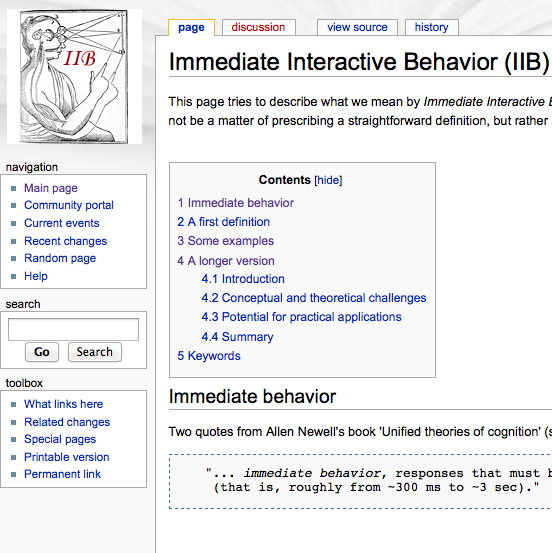Summary: We rarely solve problems in our head alone. Instead, most real-world problem solving and routine behavior recruits external resources and achieves its goals through an intricate process of interaction with the physical environment. Immediate interactive behavior (IIB) entails all adaptive activities of agents that routinely and dynamically use their embodied and environmentally embedded nature to augment cognitive processes. IIB also characterizes an emerging domain of cognitive science research that studies how cognitive agents exploit and alter their task-environments in real-time. Examples of IIB include arranging coins when adding their values, solving a problem with paper and pencil, arranging tools and ingredients while preparing a meal, programming a VCR, and flying an airplane. Whenever a cognitive agent actively interacts with the world the resulting process is likely to transform both the cognitive system and the environment. Thus, IIB is adaptive in two complementary but distinct ways: On one hand, the cognitive system adapts itself to the structure of its task environment to transcend inherent limitations (e.g., of attention and memory). On the other hand, cognitive systems exhibit a pervasive tendency to adapt and structure their environments in service of their goals.
 Keywords: Embodied cognition, epistemic actions, situated activity, distributed cognition, complementary strategies, immediate interactive behavior (IIB).
Keywords: Embodied cognition, epistemic actions, situated activity, distributed cognition, complementary strategies, immediate interactive behavior (IIB).
Related: Addition as interactive problem solving | Thinking by doing? | Arabic vs. Roman arithmetic | A taxonomy of actions | The cognitive basis of arithmetic | Interactive coin addition | IIB Wiki (hosted at RPI) | The functional task environment | Rational task analysis (RTA)
Resources: Download_PDF | Google Scholar
